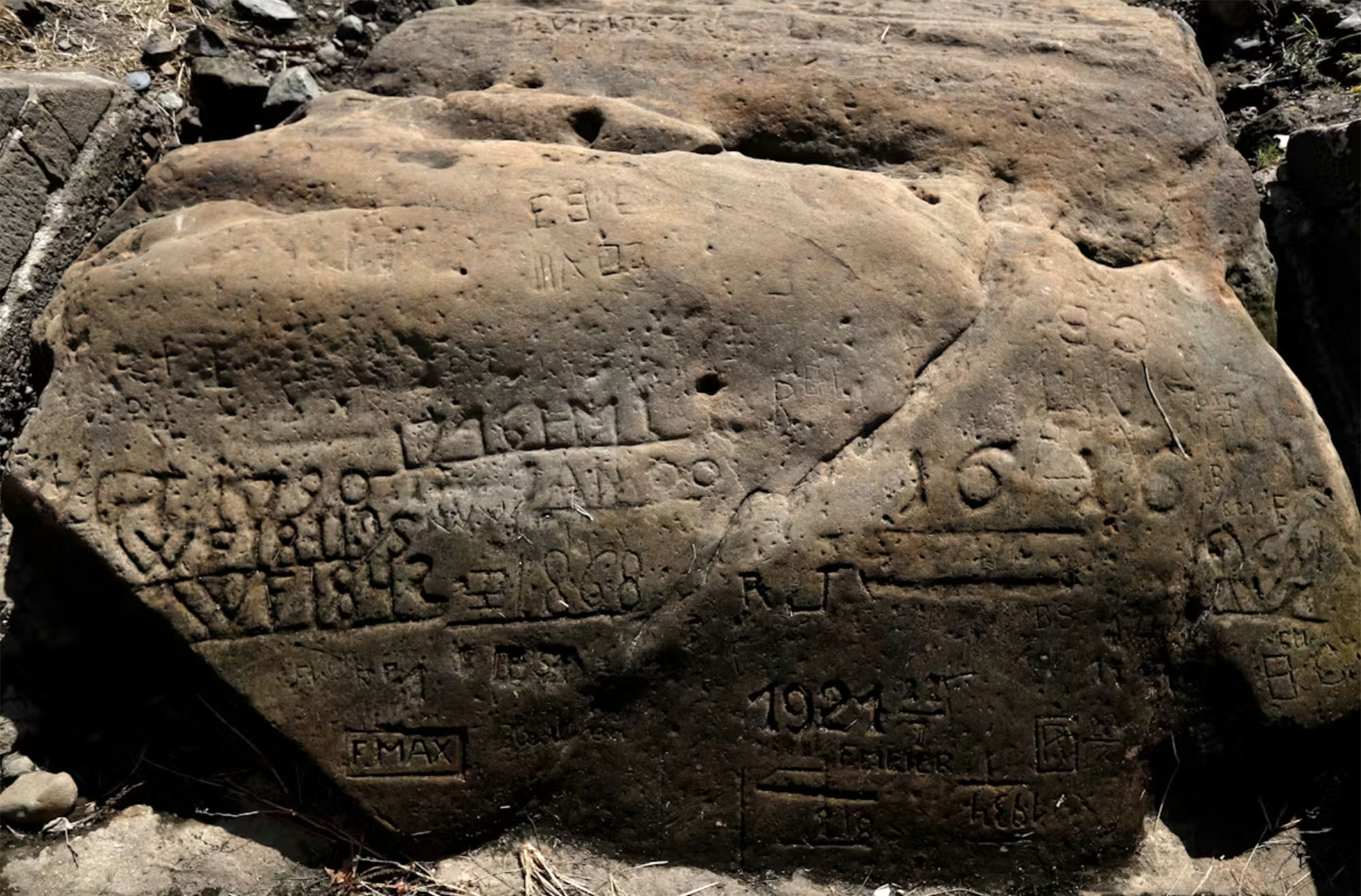

Elba basin, 1417. Due to the drought, the level of the river dropped considerably and someone marked the level of the water in a stone, carving a sign: “If you see this stone again, you will cry. The water was at this level in 1417.”
The following sign is 1616: “If you see me, cry.” In this stone are marked other years: 1707, 1746, 1790, 1800, 1811, 1830, 1842, 1868, 1892 and 1893.
It's not the only stone with similar brands and inscriptions. There are many others in the Elbe basin, such as the Rhine, Mosel, Münnnahi and Weser rivers. “What he saw cried. What now sees me will cry” says one of them; “Life will flourish when this stone disappears” says another.
The low water level of these Central European rivers indicated drought, poor harvests and therefore shortages in the current Germany, Czech Republic, Slovakia, Austria and Hungary.
The low water level of these Central European rivers indicated drought, poor harvests and therefore scarcity in the current Germany, the Czech Republic, Slovakia, Austria and Hungary. In Germany there is a marked stone that says “Hungerjahr 1947” (“Gose urte 1947”). That's why they call these Hungarian stones, starvation stones in German. After World War II, when conditions were harsh in themselves, the cold and dry winter of 1947 made living conditions even harder. And not only because of poor harvests: the decline in water levels or the freezing of water makes it difficult for rivers to navigate, which are so important in these areas, and therefore for the transport of raw materials.
The aforementioned stone, with the oldest mark of 1417, was analyzed in 2013 by Czech researchers, being finally discovered in the summer of 2022. In general, in recent years more and more rocks are being presented, and those already known are becoming more frequent above water levels due to droughts caused by climate change. Thus, the stones of hunger not only evoke the adversities of the past, but also preach those of the future.